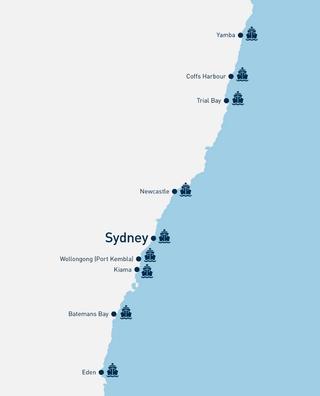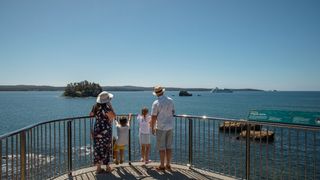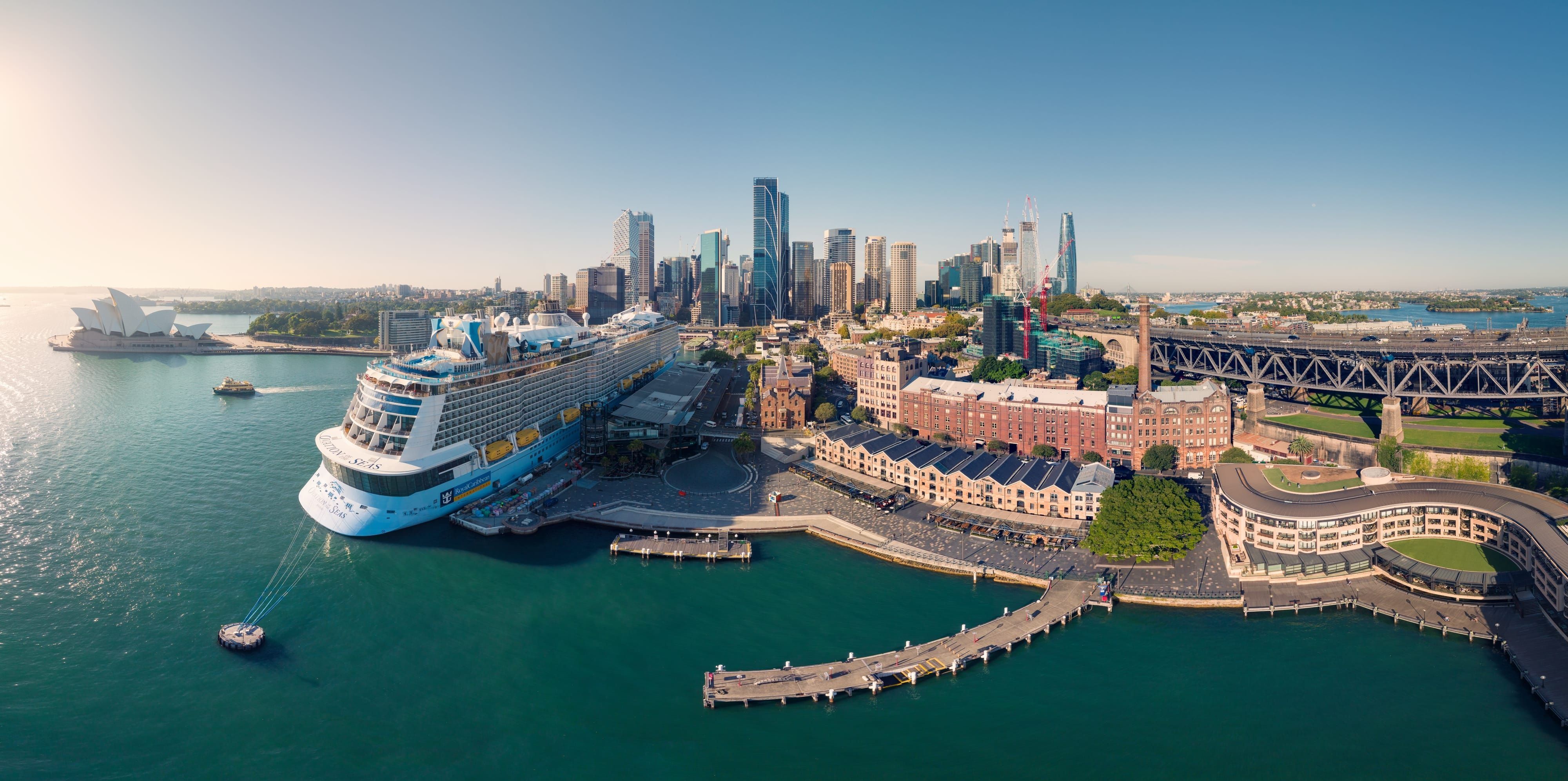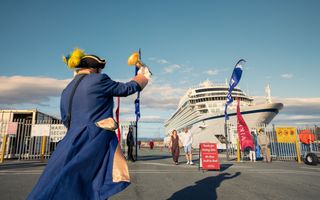Cruise essentials
In Australia, the cruise season runs from October to April, with the peak period being December to March. While most cruises operate seasonally, some domestic and round-the-world ships continue sailing in Australian waters year-round.
Strategic planning is essential in the cruise industry, with cruise itineraries typically planned between 18 months to three years in advance.
Due to the seasonal nature of cruising, it’s important to consider the cruise segment as a supplement to your usual year-round offerings.
Ports in NSW
New South Wales is home to nine ports, with four major ports currently welcoming cruise ships (subject to size and weather conditions) including Sydney (Overseas Passenger Terminal and White Bay Cruise Terminal), Newcastle, Eden and Batemans Bay. The five minor ports include Yamba, Coffs Harbour, Trial Bay (South West Rocks), Wollongong (Port Kembla) and Kiama (not every minor port receives cruise ships).

Types of cruise ships
A variety of cruise ships and cruise lines visit Australian shores, each catering to distinct demographics and travel styles.
Leisure cruises
Mega ships: Over 3,500 passengers.
Midsized-to-large ships: 1,000-3,500 passengers.
The most popular type of cruise, offering extensive amenities such as entertainment, dining, and recreational activities, often with all-inclusive options. Facilities may include water parks, swimming pools, theatre productions, casinos and kids' clubs.
This type of cruise appeals to a wide variety of travelers.
Examples: Princess Cruises, Royal Caribbean, Norwegian Cruise Line, Carnival Cruise Line, Cunard.
Luxury small ships
Under 1,000 passengers.
These premium brands appeal to travellers with a higher disposable income. Offerings tend to have gourmet dining options and more bespoke shore experiences.
Examples: Silversea, Regent Seven Seas, Azamara, Viking.
Expedition cruises
Up to 300 passengers.
Expedition cruises focus on adventure and exploration, emphasising unique shore experiences and off-the-beaten-path destinations. Smaller vessels allow access to remote inlets and shallow harbors.
Examples: Ponant, Coral Expeditions, Noble Caledonia, Windstar Cruises, Lindblad Expeditions.
About cruise ship passengers
Cruise travel appeals to a wide variety of Australian and international markets, with different cruise lines and ships attracting passengers looking for different experiences. Cruise travellers typically plan their holidays 12 to 24 months in advance.
In 2023, within Australasia, the largest portion of overseas visitors come from North America, followed by New Zealand and Europe & UK.
For more information on international markets, visit Destination NSW’s Facts & Figures and Tourism Australia’s Market Profiles.
Cruise passenger trends
According to the State of the Cruise Industry 2025 report by Cruise Lines International Association (CLIA):
- Approximately 67% of cruise travelers are Gen-X or younger
- The average cruise passenger age is 46.5
- 28% of cruise travelers cruise with three to five generations.
The 2023 CLIA Australian Ocean Source Market Report highlights key travel preferences:
- Younger travellers prefer shorter itineraries closer to home
- Older travellers tend to book longer fly-cruise itineraries to destinations such as Europe, Asia and North America.
Cruise demographics

- Couples – The most common cruise travellers are couples, who seek relaxation and cultural experiences. Empty nesters are particularly common cruise travelers.
- Families – For families cruising is seen as an affordable luxury that offers a variety of activities catering to all age groups. Family-friendly experiences are a key motivator.
- Multi-generational travel – This is more than two generations of families travelling together. This travel type represents a growing trend, with 73% of cruise travellers sailing with families that include at least two generations.
- Younger cruisers (including millennials) – Interest among younger generations is at an all-time high, with 73% of first-time travellers considering a cruise holiday.
- Solo travellers – Cruise lines are increasing the availability of single cabins, both in new builds and by retrofitting existing ships.
- Cruise ship crew – From waitstaff and entertainers to engineers and medical teams, when crew members experience destinations they often become ambassadors for local businesses and tourism experiences.
Cruise terminology
- Home port – This is where a cruise ship is based, serving as both the starting and ending point for a cruise ship’s itinerary.
- Transit port (port of call) – A stop along the cruise journey, where ships typically arrive in the morning and depart in the late afternoon or evening. Passengers explore the destination independently or through organised shore excursions.
- Turnaround port – A location where a cruise ends one itinerary and begins a new one. During this time, the ship undergoes maintenance, resupplies and welcomes new passengers.
- Overnight call – The cruise ship remains docked overnight, allowing passengers more time to explore the destination, including its nightlife, with passengers returning to the ship to sleep.
Cruise passenger health and safety
- Staying healthy on a cruise – NSW Health provides information to support safe cruise travel and to protect the community from infectious diseases such as COVID-19, influenza and gastroenteritis.
- Health information for cruise ship passengers can be found on the NSW Health website.
- NSW Government’s advice for the cruise industry provides health risk mitigation advice for all cruise vessels intending to enter or leave a NSW port.

.jpg?rect=406,0,3189,1993&w=320&h=200&fit=min&auto=format)

